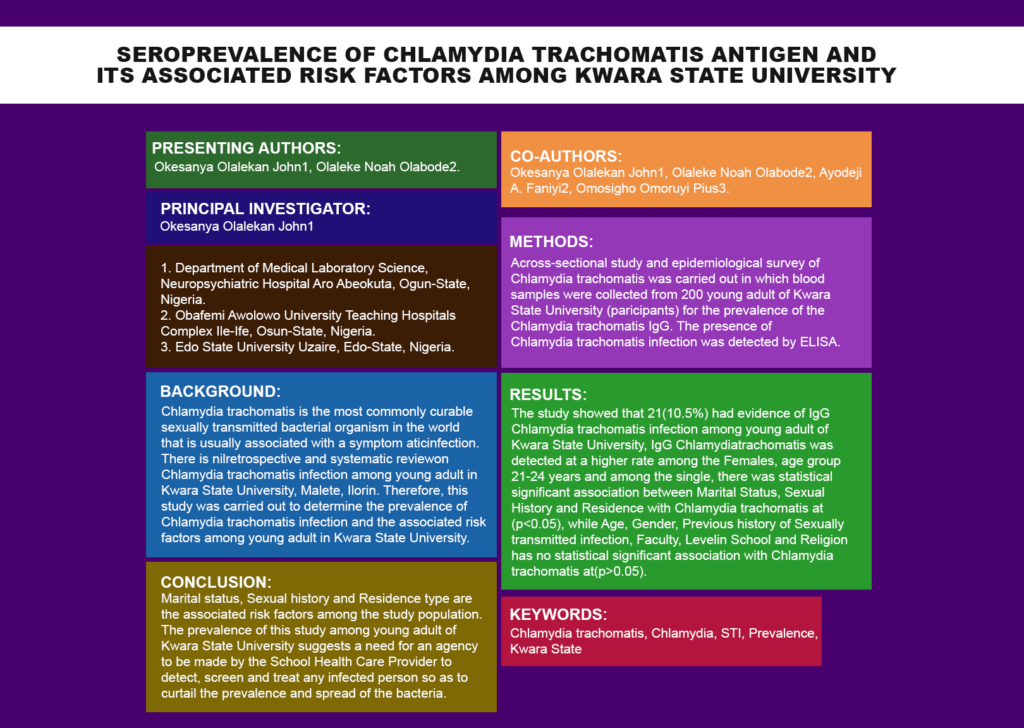Olalekan John Okesanya
Conference 2023 Presentation
Project title
SEROPREVALENCE OF CHLAMYDIA TRACHOMATIS ANTIGEN AND ITS ASSOCIATED RISK FACTORS AMONG YOUNG ADULTS OF KWARA STATE UNIVERSITY, NIGERIA
Authors and Affiliations
Okesanya Olalekan John1 Olaleke Noah Olabode2, Hezekiah O. Idowu3, Ayodeji A. Faniyi2, Mary I. Omoge4, Omosigho Omoruyi Pius5
1. Department of Medical Laboratory Science, Neuropsychiatric Hospital Aro Abeokuta, Ogun-State, Nigeria.
2. Department of Medical Laboratory Science, Obafemi Awolowo University Teaching Hospitals Complex Ile-Ife, Osun-State, Nigeria.
3. Department of Medical Laboratory Science, University College Hospital Ibadan, Oyo-State, Nigeria.
4. Department of Medical Laboratory Science, University of Benin Teaching Hospital Benin, Edo-State, Nigeria.
5. Department of Medical Laboratory Science, Edo State University Uzaire, Edo-State, Nigeria.
Abstract
Background
Chlamydia trachomatis is the most commonly curable sexually transmitted bacterial organism in the world that is usually associated with asymptomatic infection. There is nil retrospective and systematic review on Chlamydia trachomatis infection among young adult in Kwara State University, Malete, Ilorin. Therefore, this study was carried out to determine the prevalence of Chlamydia trachomatis infection and the associated risk factors among young adult in Kwara State University.
Methods
A cross-sectional study and epidemiological survey of Chlamydia trachomatis was carried out in which blood samples were collected from 200 young adult of Kwara State University (paricipants) for the prevalence of the Chlamydia trachomatis IgG. The presence of Chlamydia trachomatis infection was detected by Enzyme Linked Immunosobent Assay (ELISA).
Results
The study showed that 21(10.5%) had evidence of IgG Chlamydia trachomatis infection among young adult of Kwara State University, IgG Chlamydia trachomatis was detected at a higher rate among the Females, age group 21-24 years and among the single, there was statistical significant association between Marital Status, Sexual History and Residence with Chlamydia trachomatis at (p<0.05), while Age, Gender, Previous history of Sexually transmitted infection, Faculty, Level in School and Religion has no statistical significant association with Chlamydia trachomatis at (p>0.05).
Conclusions
Marital status, Sexual history and Residence type are the associated risk factors among the study population. The prevalence of this study among young adult of Kwara State University suggests a need for an agency to be made by the School Health Care Provider to detect, screen and treat any infected person so as to curtail the prevalence and spread of the bacteria.

